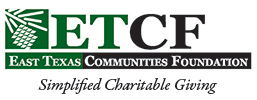The February, the East Texas Estate Planning Council meeting drew the largest crowd of professionals in several years, and featured a topic of interest to many individuals in our community. In fact, I would suggest the topic is a serious concern to many families, and one that can be difficult to discuss. It can cause sleepless nights and significant stress. So what was the subject which drew such a crowd? The subject of the meeting was not tax or investment strategies. It was how to prepare your family to receive your wealth.
Tom Rogerson, a family wealth strategist and nationally recognized speaker with Wilmington Trust, addressed this topic that hit very close to home for his own family. There is an old proverb, “Shirtsleeves to shirtsleeves in three generations,” which describes the Rogerson family, heirs of the Boston Safe Deposit and Trust fortune. Tom’s grandfather Charles Rogerson built the family’s wealth, and Tom’s father spent much of it on expensive lifestyle choices, including owning and operating a collection of boats and airplanes. The remainder of the family fortune was lost in a bad real estate project in the 1980s. As a member of the third generation, Tom was a beneficiary of his father’s spending, but there was no wealth left for him to receive as an inheritance. Tom now applies what he observed, and what many researchers have confirmed over the years, which are strategies employed by successful families to preserve family wealth for future generations.
Family wealth comes in many shapes and sizes and is not restricted to the families who established East Coast financial institutions. A transfer-of-wealth study commissioned by East Texas Communities Foundation in 2012 reported that more than $188 billion in East Texas wealth will transfer from one generation to the next over the next 50 years. Not surprisingly, the study also indicated that the primary wealth profile for East Texas is inherited wealth. You might be thinking, how is inherited wealth the top wealth profile for East Texas if you just explained that families can’t keep wealth together for three generations? It’s simple. Much of East Texas wealth is “new money,” not created from the industrial revolution of the early 1900s, but created with the discovery of the East Texas oil field in the 1930s.
With the clock ticking on the third generation of East Texas wealth holders, you can speculate two outcomes: 1) East Texas wealth is destined to the fate experienced by many other families throughout history and will be gone after another generation, or 2) There is still time to preserve East Texas family wealth by employing simple strategies used by successful families. The professionals I observed in attendance at the program last week all seemed very interested in helping your family become one of the success stories.
Tom offered several suggestions for those who are interested in preparing their families to receive and preserve family wealth. First, he recommends strong family financial education to help all generations understand how resources are protected, managed and used to produce future income. Second, he recommends investing in family communication – helping family members understand each other’s unique communication styles and opening up channels of communication and dialogue across generations. Third, he advocates sharing and understanding family values, so future generations can understand the values that led to the creation of (and might help sustain) the family wealth. Fourth, he suggests working together to understand and participate in family philanthropy. And finally, he recommends creating a family governance structure that engages and trains current and future generations.
No matter how large your estate may be, or how much time you think you may have lost, it is not too late to employ some simple and effective strategies to prepare your heirs to receive their inheritance. There are eager professionals both locally and around the country who can help you on this journey, and family philanthropy is highly recommended as a safe place to start. Perhaps engaging multiple generations of your family in the act of family philanthropy can be your next best opportunity to give well.

Recent Comments